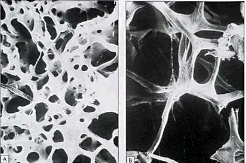Metabolic Syndrome and What You Need to Know About It
If the title of this week’s blog post sounds like a cheesy ‘50s horror movie along the lines of Plan 9 from Outer Space, or even the appropriately-named X the Unknown,that’s a good thing. Because like any effective horror movie, Syndrome X, now known by most as metabolic syndrome, should scare you and a lot of my patients. Because metabolic syndrome is a monster that is running amok in America, killing millions with heart attacks and rendering some into “zombies” with severe strokes.
Sometimes rather than focusing on one lab measurement or one troublesome symptom, we need to look at a constellation of such phenomena, because it is the characteristic patterns of such combinations that may often reveal the most valuable health information. Metabolic syndrome provides a powerful example, as it is defined by a combination of symptoms and measurable indices:
What is Metabolic Syndrome?
Metabolic syndrome is generally defined as a combination of four simultaneously-occurring medical conditions known colloquially as The Deadly Quartet:
- Central (abdominal) obesity
- High blood pressure
- Dyslipidemia
- Insulin resistance
While there is not always a one-to-one correspondence, the presence of any one of these conditions will often reveal the presence of one or more of the others – either now or in the future.
What is Dyslipidemia?
Dyslipidemia is a term that means your body’s various lipids are dangerously out of balance. There is a delicate interplay between triglycerides, total cholesterol, and the lipoproteins HDL and LDL. That’s why a patient who has a normal total cholesterol level – or a high HDL (often called “the good cholesterol”) – doesn’t automatically get a clean bill of health: it’s only part of the story.
Metabolic Syndrome and Type 2 Diabetes:
People with metabolic syndrome have a much higher risk of developing type 2 diabetes, which carries with it a drastically increased risk of coronary artery disease, heart attack and stroke. The exact mechanisms aren’t known with certainty, but insulin resistance is the main culprit. You may be pre-diabetic, which means your blood sugar levels are normal, but you are in danger of developing type 2 diabetes soon because you have borderline insulin resistance; or at the very least, your blood sugar is not being optimally processed, i.e., you do not have good glycemic control. If this describes your situation, you should have us monitor your Hemoglobin A1C level.
Testing your A1C lets you know:
1) If you are pre-diabetic, what your relative risk level is, and a way to monitor whether diet and lifestyle interventions are having a positive impact on your glycemic control.
2) If you have type 2 diabetes, the effectiveness of your antidiabetic drug therapy.
Insulin resistance makes obesity more likely. Obesity is associated with high blood pressure and dyslipidemia. Which causes which? It’s hard to know, but they are definitely intimately related. And as anyone living with diabetes can tell you, proper glycemic control is vital to combat an insulin-resistant condition; type 2 diabetics also are much more likely to be overweight and have high blood pressure. Excess glucose not “mopped up” by circulating insulin is thought to create a chronic inflammatory condition. And chronic inflammation, combined with dyslipidemia, is an important driving force in the development of atherosclerosis, which in combination with high blood pressure, leads to cardiovascular incidents, e.g. heart attack and stroke.
What Can I Do To Prevent Metabolic Syndrome
The best ways to prevent metabolic syndrome may seem the most obvious, namely reversing the conditions that make up the problem:
1) Losing weight around the abdomen
2) Lowering your blood pressure
3) Reversing your dyslipidemia
4) Reversing insulin resistance
If you do item 1) through a sensible diet and exercise plan, then 2-4 will follow. However, sometimes I may prescribe medications to work on the other three, such as antihypertensives to lower blood pressure, statins or other medications to lower cholesterol and triglycerides, and metformin to reduce blood sugar. For mild cases, diet and exercise alone may be enough. For more moderate cases, certain natural supplements may suffice instead of, or as a helpful adjunct to, prescription medications.
What If I Already Have Metabolic Syndrome?
The good news is that metabolic syndrome is reversible! And all the things listed above that can prevent metabolic syndrome can also be used to treat it. Cases of type 2 diabetes have been completely cured by diet and exercise alone. Even weight-loss surgery (bariatric surgery) that removes a large amount of central abdominal fat has been shown to reverse metabolic syndrome and type 2 diabetes. I think that’s pretty amazing!









































